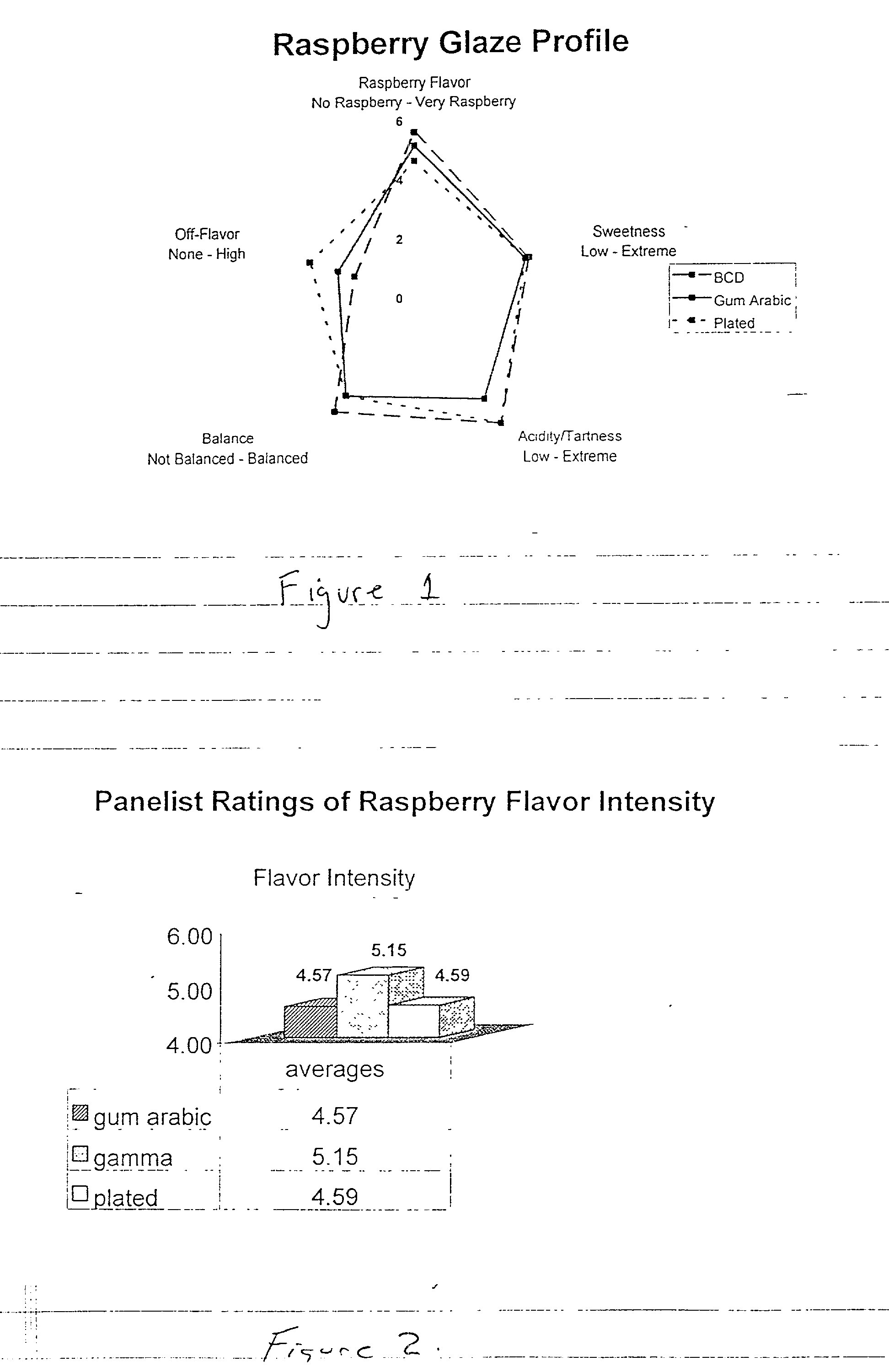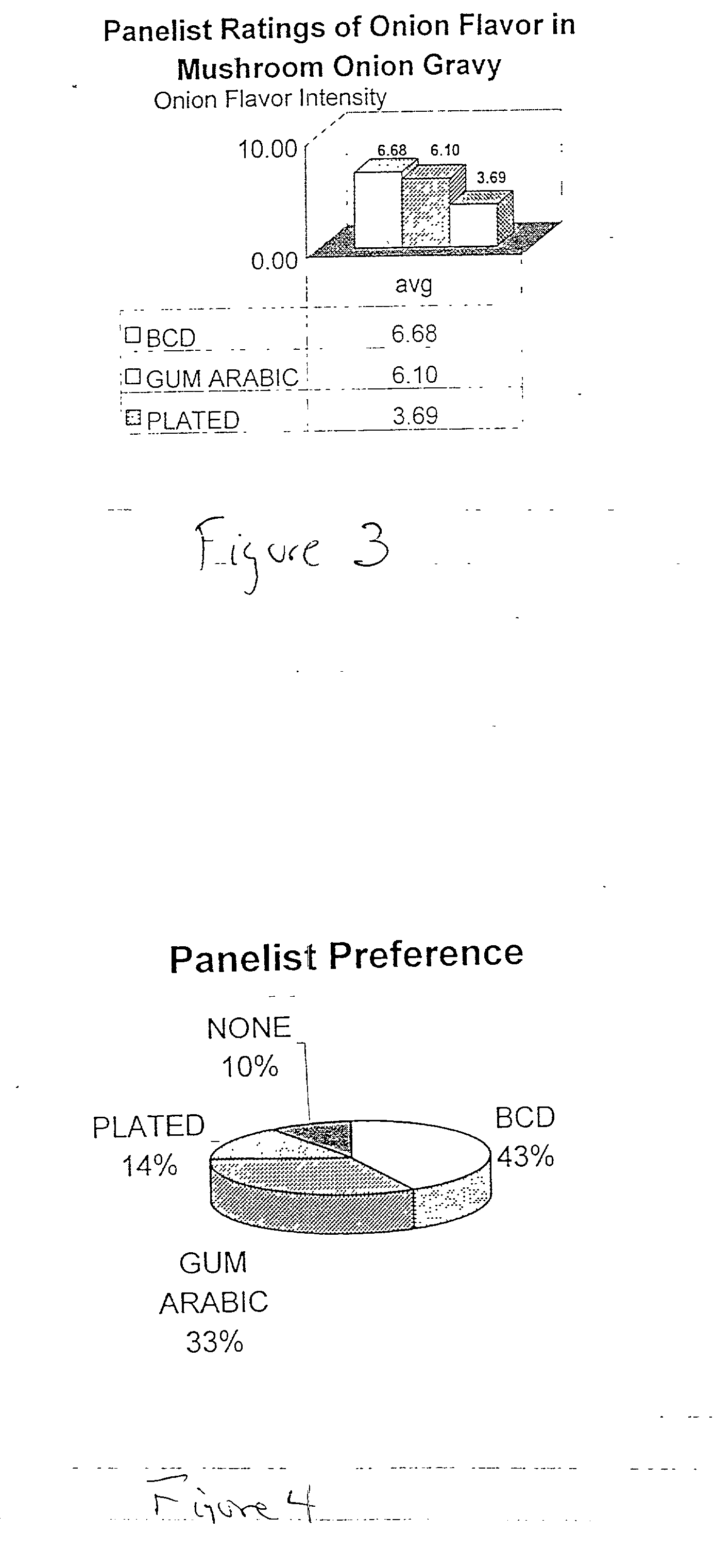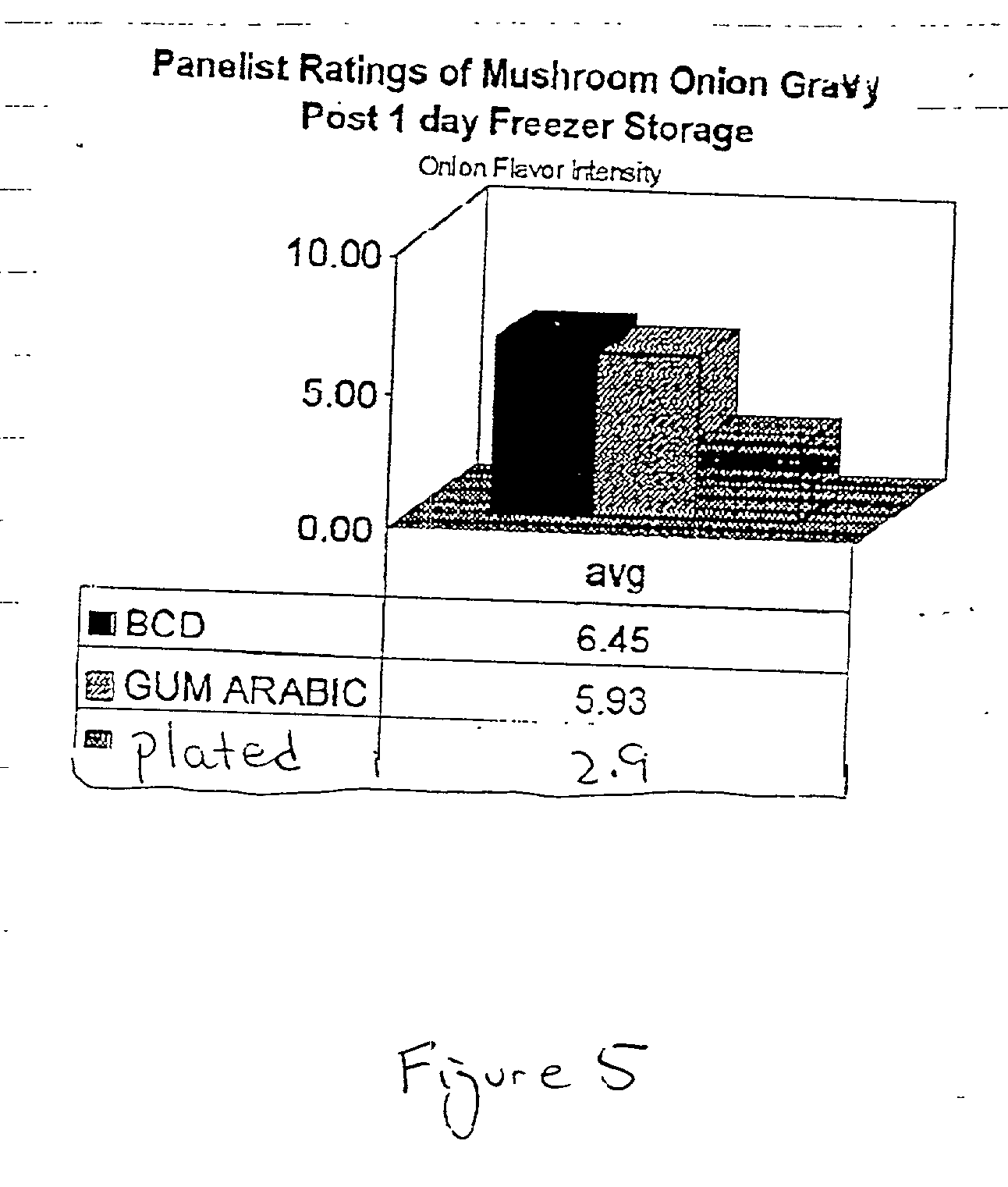Flavor stabilization in foods
a technology of flavor stabilization and food, which is applied in the field of flavor stabilization of frozen foods and microwave heated foods, can solve the problems of reducing the amount of flavor used in food, and achieve the effect of more flavor stability and protection of flavor
- Summary
- Abstract
- Description
- Claims
- Application Information
AI Technical Summary
Benefits of technology
Problems solved by technology
Method used
Image
Examples
examples
Introduction
[0028] The examples given are in two different applications. One application utilizes an encapsulated fruit flavor, raspberry, with both beta cyclodextrin (BCD) and gamma cyclodextrin (GCD) to illustrate the functionality of the various cyclodextrin forms. A second application utilizes an essential oil flavor, onion, to illustrate the versatility of cyclodextrins as flavor protectants in foods, both microwavable and frozen.
Encapsulation and Determination of Flavor Load Levels
[0029] Flavor encapsulation may be performed in any of the established methods of complexation with cyclodextrins. In these examples, encapsulation was achieved by a co-precipitation method followed by spray drying. The flavor load levels in the encapsulated products were determined via solvent extraction-gas chromatography method. These load levels were used to adjust the formulation so that the same amount of flavor was added for each test. The control in these tests was the flavor plated onto a ma...
PUM
 Login to View More
Login to View More Abstract
Description
Claims
Application Information
 Login to View More
Login to View More - R&D
- Intellectual Property
- Life Sciences
- Materials
- Tech Scout
- Unparalleled Data Quality
- Higher Quality Content
- 60% Fewer Hallucinations
Browse by: Latest US Patents, China's latest patents, Technical Efficacy Thesaurus, Application Domain, Technology Topic, Popular Technical Reports.
© 2025 PatSnap. All rights reserved.Legal|Privacy policy|Modern Slavery Act Transparency Statement|Sitemap|About US| Contact US: help@patsnap.com



